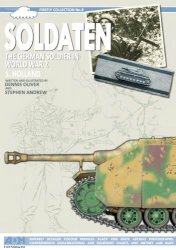The pharaohs spent great amounts of resources and time moving southward for a purely economic reason: the acquisition of gold. In the Twelfth Dynasty (1938-1755 bce) we read for the first time the phrase ‘‘Gold of Kush,’’ and in order to secure this lucrative item a foreign policy was forged (Vercoutter 1959; Berlev 1987). With the development of ships it became possible to supply a series of defensive garrisons in the vulnerable cataract regions (Trigger 1976; O’Connor 1993). Complex fortifications, with granaries, slips for boats, thick crenellated walls with eye-sights for the use of archers, and defensive mounding all bear witness to an increased technology of defense.
With this building activity came a long series of wars. Many pharaohs personally led their troops into the heartland of modern Sudan. They burned tents and destroyed fields of grain. Now the king had his own troops, men who were personally dependent upon him for a career (Berlev 1971). This group of soldiers formed the nucleus of the army and was the precursor of the later Egyptian standing army.
The Twelfth Dynasty records prove that an army did exist within Egypt, and that the term ‘‘standing’’ might apply (Berlev 1967b). The elite group consisted of the soldiers in the fleet. In fact, all of the lower state officials in lists from the king’s palace at Thebes were directly associated with the military sector (Quirke 1990: 81-3). They were also employed for labor service; army men were used in building projects. Soldiers were chosen when young.
One navy veteran recorded that he went north as far as Avaris in the Northeast Delta and as far south as Kush (Gardiner 1916: 100; Berlev 1967b). He must have been led by a ‘‘commander of the ships,’’ the leader who stood over the normal ‘‘troops of the naval team.’’ The first deputy of the pharaoh, the vizier, communicated directly with the commanders of the ships. Indeed the vizier may be considered the actual commander of the fleet (Van Den Boorn 1988). The organization of the army at this time allowed only the colonization of that part of Nubia that was close to the river, the control of Kush farther south in Africa, and just possibly the indirect control of several Levantine ports.
Egyptian military activity in Asia was seaborne during the Middle Kingdom. In the Twelfth Dynasty the king’s troops served beside other troops who owed loyalty to other powerful magnates of the land. Only with the attrition of the Middle Egyptian governors or nomarchs did the military system become a real branch of the central government (Franke 1991).
Our information on the army in the Twelfth and Thirteenth Dynasties (1938-1630 bce) comes from private inscriptions. From them we can infer a fixed military hierarchy that was recruited from middle-level families.
Throughout Egypt and Nubia as well most transportation was by ship on the Nile. Hence we find the infantryman usually being transported by boat (Bourriau 2000). Recent archaeological discoveries at the site of Avaris in the northeast make it evident that the horse was brought into Egypt during the early to middle Thirteenth Dynasty (1755-1630 bce) (Rommelaere 1991; Von Den Driesch and Peters 2001).
The army of the Middle Kingdom had many troops that performed the role of garrison soldiers. In the Nubian fortresses the archers hid on top of the walls while their comrades still on foot engaged the foe close to the forts. An increased population contributed the troops to mount invasions in a field where the sheer numbers were a major determinant of success. The gradual introduction of bronze allowed even greater success.
Bronze is composed of tin and copper. Since Egypt had no tin supplies, it was necessary to import this metal. From Europe and Anatolia, today’s Turkey, it was shipped south to Syria or by sea to Ugarit and Byblos on the Syro-Lebanese coast, and then on to Egypt. The military technological level of the Egyptians was superior to Nubia, but was only on a par with Asia.
Egypt, a large and cohesive state, faced small, unattached city-states in Asia. None of the latter could muster soldiers to equal an Egyptian host. They resisted conquest because they lived in fortified cities that could only be taken by siege (Berlev 1967b).
In the south the Egyptians stopped at the Second cataract, but sometimes troops penetrated further up the Nile. There was a powerful chiefdom called Kerma situated around the Third Cataract that blocked any Egyptian advance. Here, many troops were needed to continue the wars; the enemy was numerous and could easily retreat in case ofloss. In order to hold the land additional troops and support were needed, and the area of Kerma was not the best in which to establish large garrisons because it was open to side attacks, both from the east and west.
The technique of bronze manufacture most certainly aided the Egyptians in fighting in the south. The rapid movement of soldiers by water enabled the kings of the Twelfth and Thirteenth Dynasties to maintain control over Lower Nubia, but on land their speed was the same as the enemy’s.




 World History
World History









